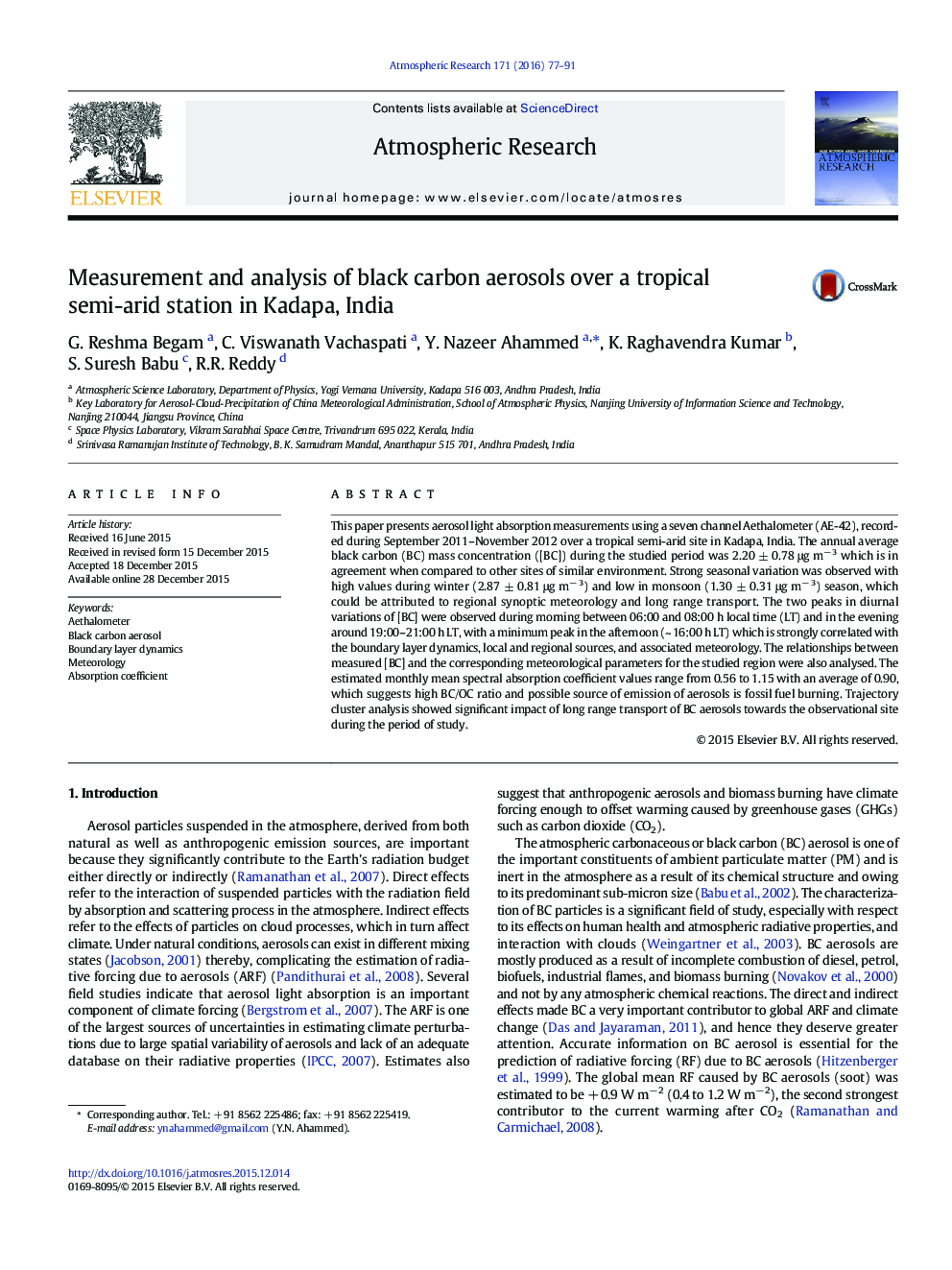| Article ID | Journal | Published Year | Pages | File Type |
|---|---|---|---|---|
| 4449604 | Atmospheric Research | 2016 | 15 Pages |
•Characteristics of black carbon aerosols were reported over Kadapa.•BC mass concentration ([BC]) showed significant diurnal and seasonal variations.•Relationship between [BC] and meteorological parameters was investigated.•Absorption coefficient showed strongly spectral dependent.•HYSPLIT model trajectories were derived to identify long range air mass transport.
This paper presents aerosol light absorption measurements using a seven channel Aethalometer (AE-42), recorded during September 2011–November 2012 over a tropical semi-arid site in Kadapa, India. The annual average black carbon (BC) mass concentration ([BC]) during the studied period was 2.20 ± 0.78 μg m− 3 which is in agreement when compared to other sites of similar environment. Strong seasonal variation was observed with high values during winter (2.87 ± 0.81 μg m− 3) and low in monsoon (1.30 ± 0.31 μg m− 3) season, which could be attributed to regional synoptic meteorology and long range transport. The two peaks in diurnal variations of [BC] were observed during morning between 06:00 and 08:00 h local time (LT) and in the evening around 19:00–21:00 h LT, with a minimum peak in the afternoon (~ 16:00 h LT) which is strongly correlated with the boundary layer dynamics, local and regional sources, and associated meteorology. The relationships between measured [BC] and the corresponding meteorological parameters for the studied region were also analysed. The estimated monthly mean spectral absorption coefficient values range from 0.56 to 1.15 with an average of 0.90, which suggests high BC/OC ratio and possible source of emission of aerosols is fossil fuel burning. Trajectory cluster analysis showed significant impact of long range transport of BC aerosols towards the observational site during the period of study.
